What is TIG Welding Used for? (& How to Know When to Use It)
Last Updated on
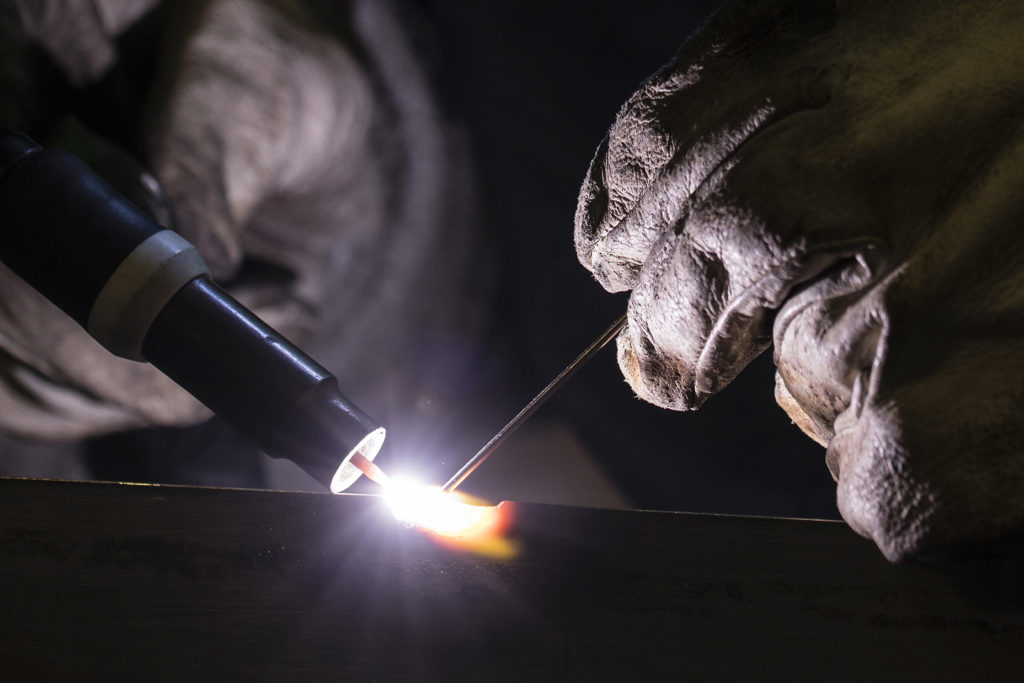
Have you ever had an interest in welding? You probably have trouble differentiating TIG from MIG welding and when to use either of the two methods. For many years, welders have been using TIG welding to finish projects with thinner metals that MIG could not handle.
So, what’s TIG welding used for, and how do you know when to use it? TIG is an acronym for tungsten inert gas. The name basically describes the welding process since a tungsten electrode runs the current through the metals being welded. Welders typically use TIG welding to complete welds when metal objects are very thin and provide a touch-up for their projects.
What is TIG Welding?
TIG welding is a process that uses non-consumable tungsten. In this method, heating is done by placing an arc between a tungsten electrode and the workpiece. Welders use this procedure with shielding gas and may or may not use filler metals. Some of the primary variables in TIG welding are welding current, travel speed, arc voltage or arc length, and the shielding gas composition.
Once the TIG welding process is complete, the tungsten and weld puddle are usually cooled off with inert gas, argon. This cooling process is vital since it provides you with safety and protection from unnecessary accidents.
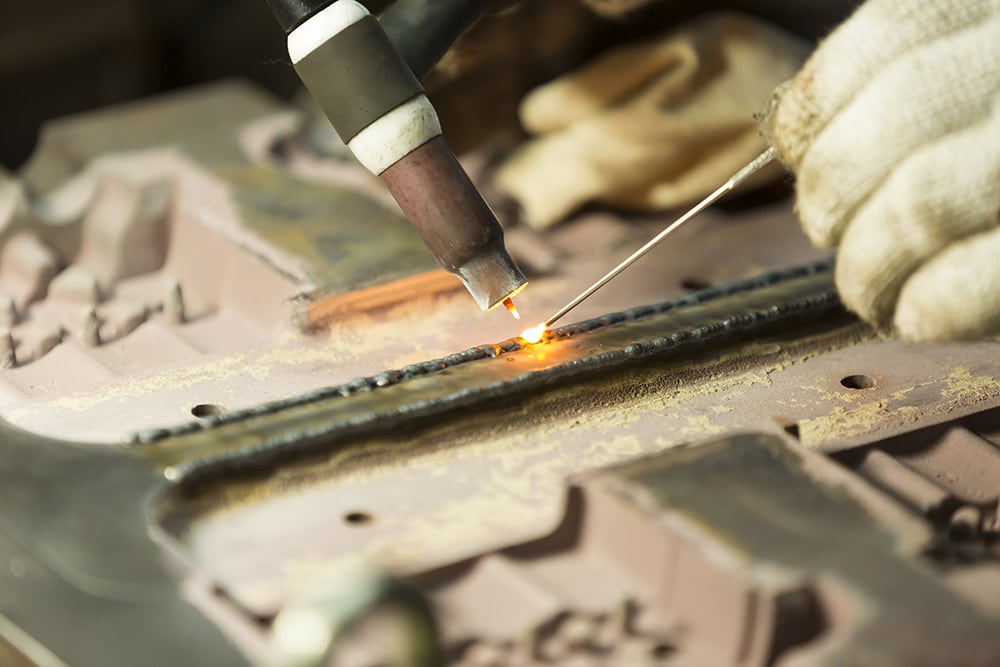
What Do You Need to TIG Weld?
For TIG welding, you will require more than a few pieces of equipment. Here is an overview of the equipment.
1. An Auto-Darkening Helmet
Welding helmets are among the primary necessities for TIG welding since they protect you from burns and sparks. There are two types of helmets: auto-darkening and manual darkening. The auto-darkening helmets are the best to have since they have more advanced features.
2. Gloves
Currently, the market provides several types of welding gloves. They include goatskin, cowhide, or flame-resistant gloves. Most TIG welders prefer using goatskin gloves since they are light and flexible. Before getting gloves, do your due diligence to get the ones suitable for your project.
3. Jacket
Welding jacket fabrics are the same as those of the welding gloves, and they come with a satisfaction guarantee from the manufacturer. Most welders prefer cowhide jackets to goatskin ones because they are more affordable. A flame-resistant jacket will be a great choice because you need protective gear with heat-resistant characteristics.
4. TIG Goggles
TIG goggles are essential to protect you from harmful radiation. The goggles are suitable for small tasks, but you will need shading lenses for bigger projects that use higher heat.
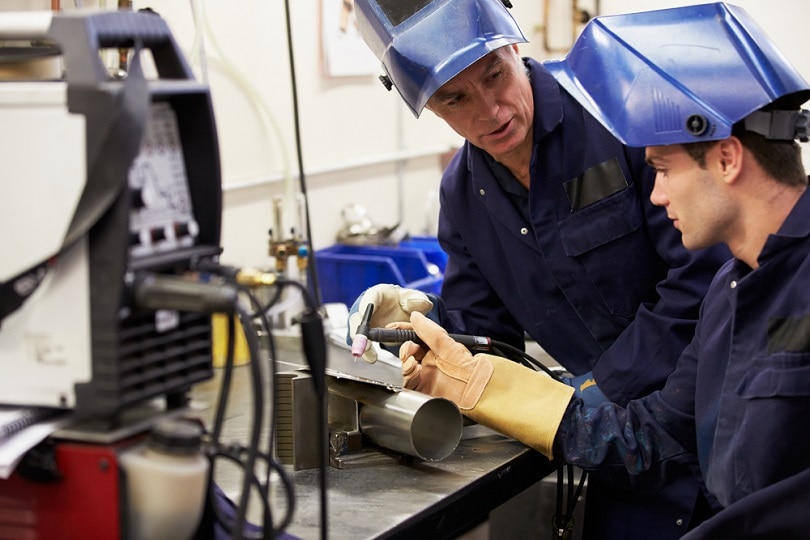
5. Welder
Welders come in different sizes and types. The best welder to use is the 3-in-1 type. They range from small to industrial-sized and can perform a range of complex jobs.
6. The Gas Tank
During TIG welding, you will require argon as the shield gas to protect your weld pool. If you do not want to purchase a whole tank, you can always rent one.
7. Tungsten
Most TIG welders come with tungsten rods for the torch, but you will need to purchase more as you continue welding.
8. Grinders, Sander, and Rods
You will also need a grinding wheel to sharpen the tungsten. Alternatively, you can use a bench grinder that comprises a sander. The filler metal rod should be the size of the metal size to be welded.
How Do TIG Welders Work?
If you are familiar with the oxy-acetylene torch, then you will have an easy ride with TIG welding. During the welding process, you will use an electric torch to weld while feeding the filler rod into the molten puddle. The method also provides welders with the capability to soft start and stop, making the process different from other MIG or stick welding processes.
The process also requires a welder to use an accelerator pedal to control the heat, especially while working on a bench. The heat can be controlled using fingertip remotes on the torch.
What’s the Difference Between MIG and TIG Welding?
Understanding TIG welding involves breaking down the processes involved in MIG. MIG welding involves continually feeding a cord through a metal wire into the weld you are creating. The cord uses the metal supply to easily combine two metallic objects as the welder’s filler material. On the other hand, TIG uses inert tungsten gas to join the two metal objects together and may or may not use filler materials as welding continues.
MIG welding uses consumable filler to combine metal objects. This property makes welding easy when working on larger and thicker metals. TIG welding does not always use filler materials due to heat being generated. You are only required to heat the TIG torch to be extremely hot for you to swiftly weld thinner metals.
When to Use TIG and MIG Welding
1. What is the Thickness of the Metal?
The thicker the metal, the harder it will be to join with just a single heating session. For this reason, thick metals are best welded using MIG. A TIG welding torch is not sufficient for this process.
2. What Electrical Conductivity Do You Need?
It would help if you considered how malleable the metal you are welding is. If it is highly malleable, you will need to heat the metal for a longer time, which uses up more energy. For metals that are electrically resistant and get hot faster, you can weld without filler material, making TIG welding the most suitable method.
3. Do you Need the Metal to be Smooth?
If you use filler materials during welding, you will end up with a lot of weld splatter. Removing the spatters will be an additional task during smoothening. In this case, direct metal to metal welding is best, making TIG welding the ideal method.
4. Are You Welding Dissimilar Metals?
TIG welding is not the best method to use while welding dissimilar metals due to weak bonds between the welds. However, there are instances when you will have to weld different metals. You will go for MIG since it uses a filler material and forms strong bonds on the end product.
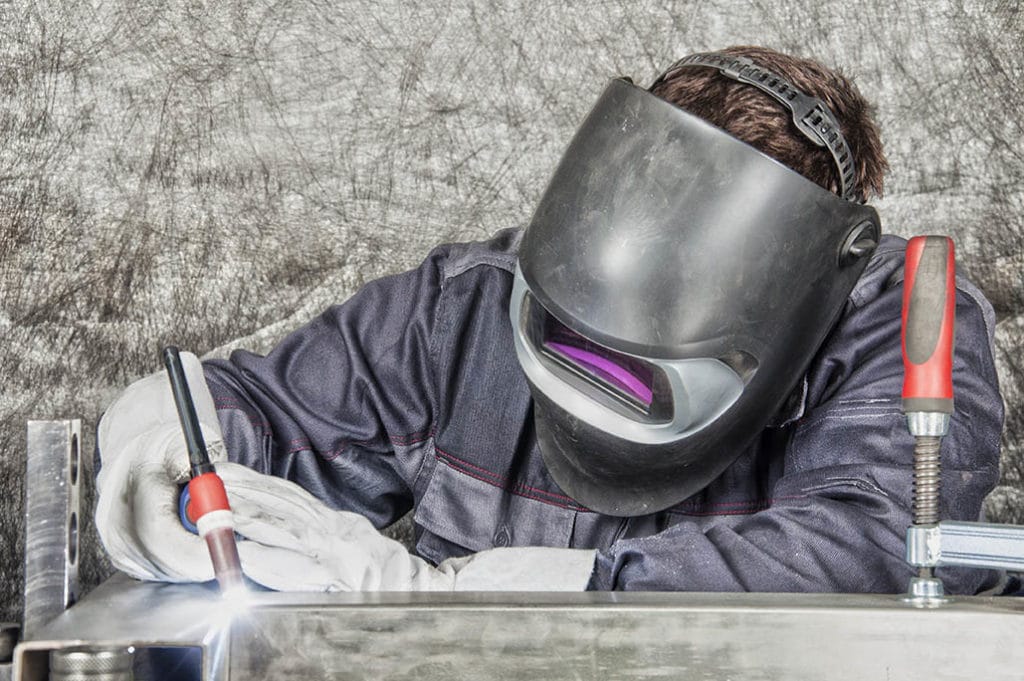
When is TIG Welding Commonly Used?
1. Welding Small and Thin Metals
Welding metals such as aluminum are best welded using TIG since it provides the welder with more accuracy. The welder can also perform different actions like decorating the metals. For example, when manufacturing objects that require stylish appearances for the purposes of aesthetics, TIG gets the job done.
2. Precise and Pretty Welds
TIG gives welders more control, allowing you to achieve precision.
3. Variety of DIY Projects
TIG welding’s simplicity and ease make it possible to be used by both beginners and experienced welders while working on their DIY projects. Examples of DIY projects include making bicycles, carts, furniture, and shelving.
The Procedure of Completing a TIG Welding Project
Welders can use TIG welding for a variety of metals such as titanium, aluminum, and copper. The method is also essential for completing tricky projects like curving or rounding off any metal object. Below are the steps to follow to complete a TIG welding project.
1. Choose Your Electrode
Always pick an electrode with regards to the type of metals being welded. If you are welding aluminum, the best rod to use is a pure tungsten rod.
2. Prepare the Rod to be Used
Preparing the rod involves grinding it to the desired point of usage. Grinding the rod is usually required, especially if it is brand new, rounded on the tip, or not pointed. By grinding, you’ll have reduced the energy used during welding.
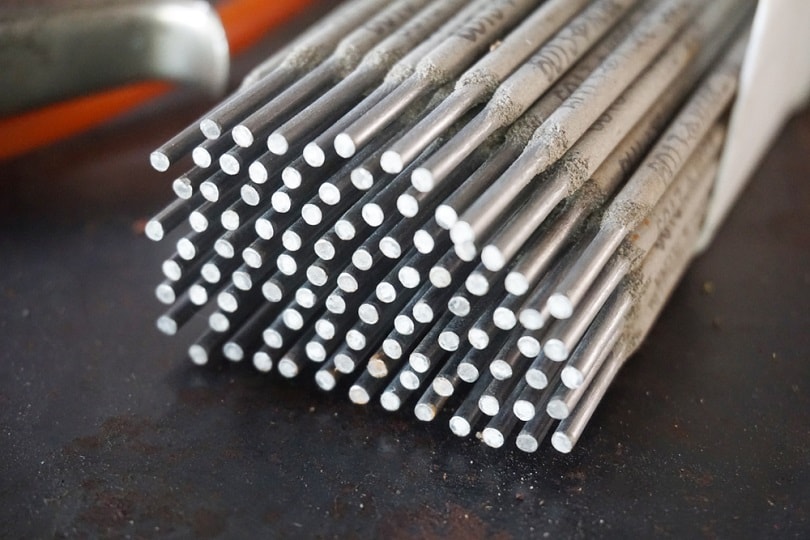
3. Place the Electrode into the Collet
This process involves unscrewing the electrode holder and inserting your electrode then screwing it back. You can skip this stage if your electrode is already inside.
4. Select the Settings for TIG Welding
A TIG welding machine provides welders with three options in settings: AC, DCEP, and DCEN. Alternating Current (AC) settings are best used when welding metals such as aluminum. When balling your tip or stick, welding Direct Current Electrode Positive (DCEP) is the most preferred. Welders using steel metals prefer using Direct Current Electrode Negative (DCEN).
The next setting is the “Cleaning/Penetrating” settings to place it on the sharp end. When you are using a scale of 1 to 10, ensure you set it at gauge 7. Switch on the “Air on” for up to 5 seconds and set the “Max Amps” at around 250.
5. Get the Shielding Gas Ready
When welding using aluminum metals, use pure argon for this process and use a mixture of argon and carbon dioxide when welding steel.
6. Get Your Metal and Welding Table Ready
You will require a large metallic area to allow sufficient electricity to flow through the metal. Alternatively, you can use a large, flat sheet of metal in place of a welding table. Scrub off the surfaces using a wire to remove dust and other impurities. Cleaning ensures you end up with prettier and precise welds. Use acetone to wipe the welding rods down.
Ensure you clamp the metals before beginning the welding process to keep the welds in place. Most welders also prefer spraying the welding table with anti-spatter to prevent metal leaks from sticking on the welds.
7. Gearing Up
Gearing up is necessary for your safety and protection against radiation, heat, sunburns, and harmful gases produced during welding. Welders are required to put on thick gloves, a welding helmet, closed-toe shoes, and a welding coat.
8. Do the Final Check
At this stage, you must counter-check if all equipment is in place and functioning optimally. You should also check if your gear is well worn and tucked up as recommended in a welder’s manual. Proceed to place the electrode in your dominant hand and test it. While testing, ensure the electrode moves freely and is easy to work with before you begin welding.
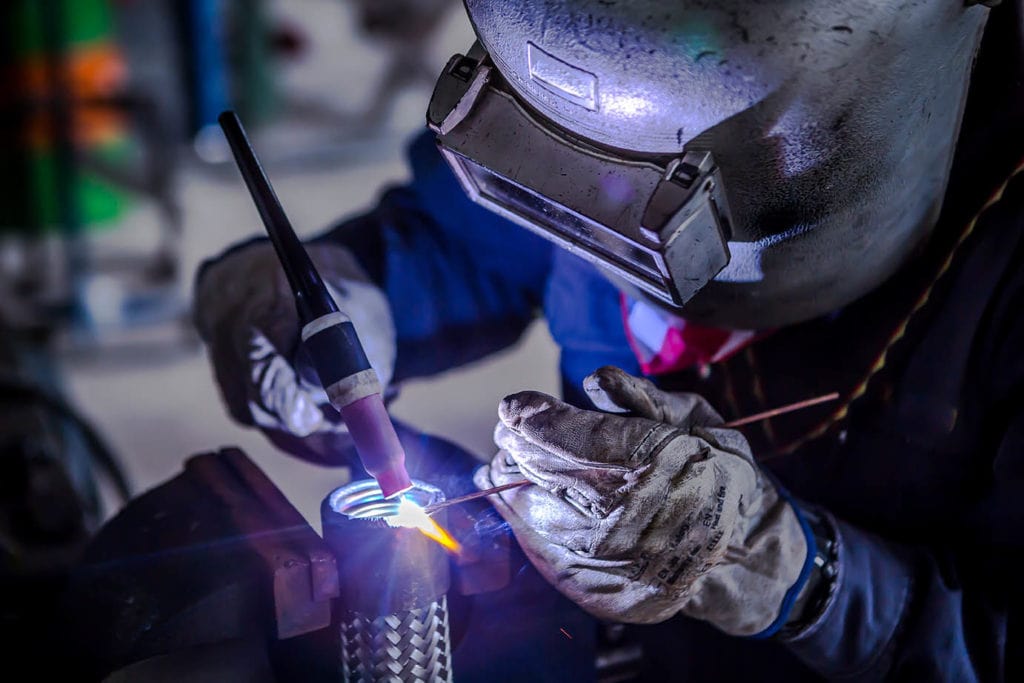
TIG Welding for Beginners
To understand the process of TIG welding for beginners, here are the essential tips to consider.
1. Use the Minimum Power
Using too much power can cause the weld to burn hence the need to use minimum power. Using minimal power also allows you to develop a puddle technique suitable for creating strong and stable welds.
2. The Angle of the Torch
When welding, the torch should be at least 15-20 degrees away from the material’s surface and electric current flow path. This angling will allow easy access to the filler material and increase visibility on the part being welded.
3. Keep the Welding Materials Clean
Ensure the welding metals are clean for a strong welding arc. Use a wire brush to scrub off dust and other impurities from the metals.
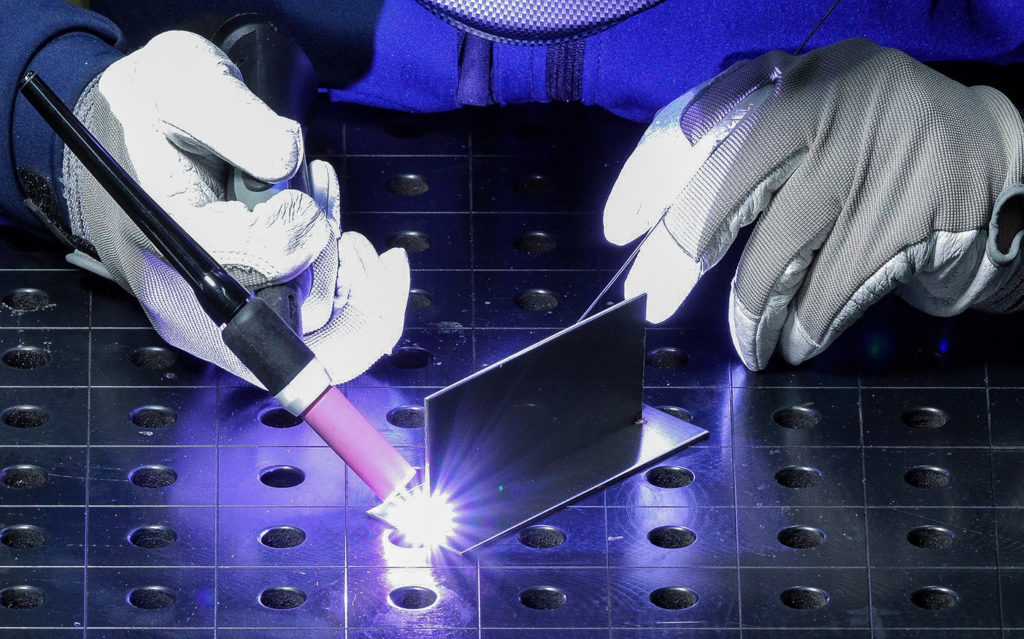
4. Avoid Melting the Filler Rod Directly
Remember the TIG welding principle that the torch melts the base metal while the molten puddle melts the filler material. Direct melting will result in a weak bond on the weld.
5. Wear Protective Gear
Since tungsten electrodes emit low radiation levels, put on shading lenses helmets. You also need to wear a respirator to protect yourself from toxic gases and fumes. Ensure you also weld in a well-ventilated area to reduce the chances of dust from compromising welds’ quality.
6. Use the Correct Type of Tungsten
Different types of metals work with varying types of tungsten. Working on aluminum surfaces, use green tungsten and use red tungsten for steel metals.
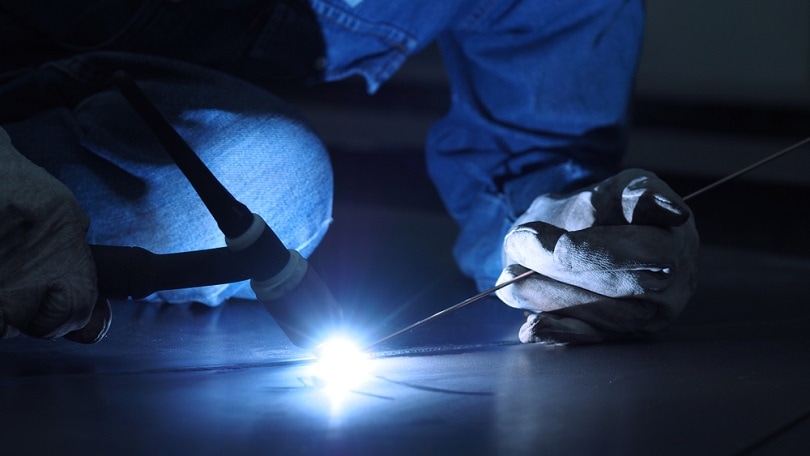
FAQs
1. Why Use Tungsten as an Electrode?
Tungsten is usually used due to its high-temperature resistance elements. Their melting points are estimated at around 6170 °F, making them unable to melt during arc welding. They are resistant to corrosion, oxidation and are useful in electric transmission.
2. Which is the best gas for TIG Welding?
The best gas to use is argon, with purity levels as high as 99.967% and low water vapor below 0.005 mg.
Final Thoughts
Once you know what TIG welding involves, how it is used, and where to use it, you can begin your welding project. If you follow this comprehensive guide, you should be able to come up with beautiful welds whether finessing your profession or enjoying your new hobby.
Featured Image Credit: Lapis2380, Shutterstock
